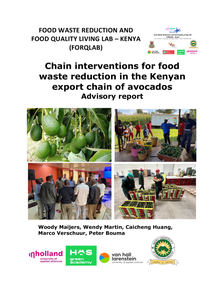Empowerment has become a hegemonic moral horizon and key modality of governance across the global South and the global North. Whether in the realm of development or in that of welfare and urban governance, a broad range of actors, from local NGOs to social professionals and international donors, now envision the empowerment of local communities as a crucial condition and means for achieving good governance and social justice (Cruikshank 1999; Rose 1996). Anthropologists and development scholars – including ourselves – often find themselves ambivalently positioned in relation to such projects of empowerment. In this essay, we turn to the hesitancies and experimental practices of our research interlocuters in two urban settings saturated by a ‘will to empower’ (Cruikshank 1999). During ten months in the year 2017, Anick followed the everyday practices of family workers in three community centers and neighborhood associations in the northeast of Paris, who were tasked to help working-class and migrant-background parents regain confidence and agency vis-à-vis state institutions. Like the parents with whom they worked, many of these family workers hailed from the banlieue themselves and were of migrant backgrounds. Naomi worked with 15 male former gang leaders in Mombasa (Kenya) who sought to reform themselves to escape police violence. Naomi’s interlocutors were between 16 and 28 years old and worked closely with their friend Hasso during 2019 and 2022. In this period, Naomi conducted eight months of ethnographic fieldwork with these young men and with Hasso, during which she observed their weekly meetings and the individual lives of several group members, and she conducted life history interviews with five of them. These two cases thus figure actors who were differently positioned in relation to the will to empower.
DOCUMENT

The abstract concerns research work being conducted now about how a European university's (Hanze University of Applied Sciences, Groningen, The Netherlands) engagement activities with local communities in Mombasa area, Kenya. The paper will concentrate on the challenges and opportunities for such an engagement and the search for a possible model that may be suitable for this type of engagement.
DOCUMENT

In dit boekje vindt u inspirerende logistieke innovaties die studenten van de minor Airport Seaport Logistics de afgelopen vier jaar zijn tegengekomen tijdens hun contacten met het logistieke MKB.
DOCUMENT

The Kenyan supreme court recently struck down a government decision to ban the registration of an LGBTIQ+ community rights organisation, sparking new homophobic rhetoric in the country. Kenya is one of 32 African countries that criminalises homosexuality. Those who identify as part of the LGBTIQ+ community are often discriminated against, harassed and assaulted. Lise Woensdregt and Naomi van Stapele, who have researched queer experiences in Kenya for nine years, explain the impact of this ruling.
DOCUMENT

This research project aims to pick up where Incommunicado left off, to look past conferences organized in the West, the debates sponsored by western organizations, and to instead look through the lens of the individual end users on the ground. This project aims to embed itself amongst the people living at the ‘bottom of the ICT pyramid’ and to look at the same discussion from their perspective. It is this ‘other’ point of view that is too often missing in the ICT4D debate, otherwise a valuable voice that helps to put technologies, projects and organizations into their proper context.
DOCUMENT

This publication the avocado advisory report which is based on popular papers (practice briefs) of master and bachelor theses and business assignments of students at three Dutch Universities of Applied Sciences: Van Hall Larenstein (VHL), InHolland and HAS Green Academy, and Meru University of Science and Technology in Kenya. All 23 theses and business assignments were commissioned through the research project entitled “Food Waste Reduction and Food Quality LivingLab (FORQLAB)” in Kenya.
MULTIFILE

This paper assesses the sustainability performance of the banana value chain by comparing and discussing 25 attributes owing to different sustainability dimensions. The paper identifies critical aspects and provides a qualitative assessment of the sustainabilityperformances of banana chains at the local level. The study finds economic, social, and environmental indicators have moderate sustainability performance in the Arba Minch, Ethiopia. The chain has an advantage in terms of profitability, employment, and emissionof air pollutants; and constraints in terms of coordination, value share, profit margins, market diversity, product and market information, transportation, waste management, and safety and hygiene.
MULTIFILE

DOCUMENT

This magazine presents the highlights of the applied research project “Inclusive and climate-smart business models in Ethiopian and Kenyan dairy valuechains (CSDEK)”. The CSDEK applied research project was conducted in six case study areas, three in Ethiopia and three in Kenya. At the time of publishing this magazine, research was still ongoing in some of the study areas. The projectteam and researchers hope to contribute to creating awareness of climatesmartdairy practices and development of the dairy sector in Ethiopia and Kenya. In two of the study areas, collaboration between VHL and dairy stakeholders will continue, preferably through local networks in a Living Lab approach.
MULTIFILE
